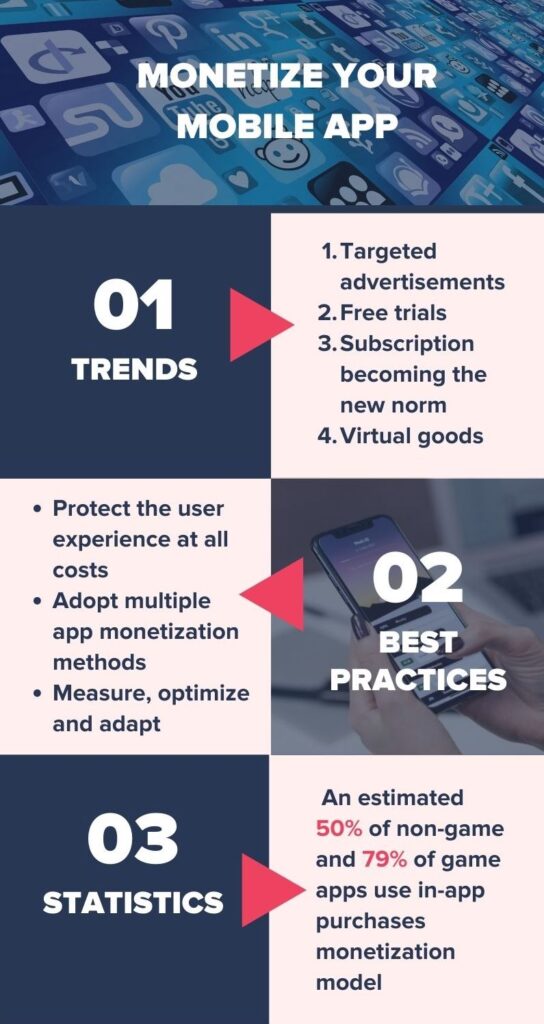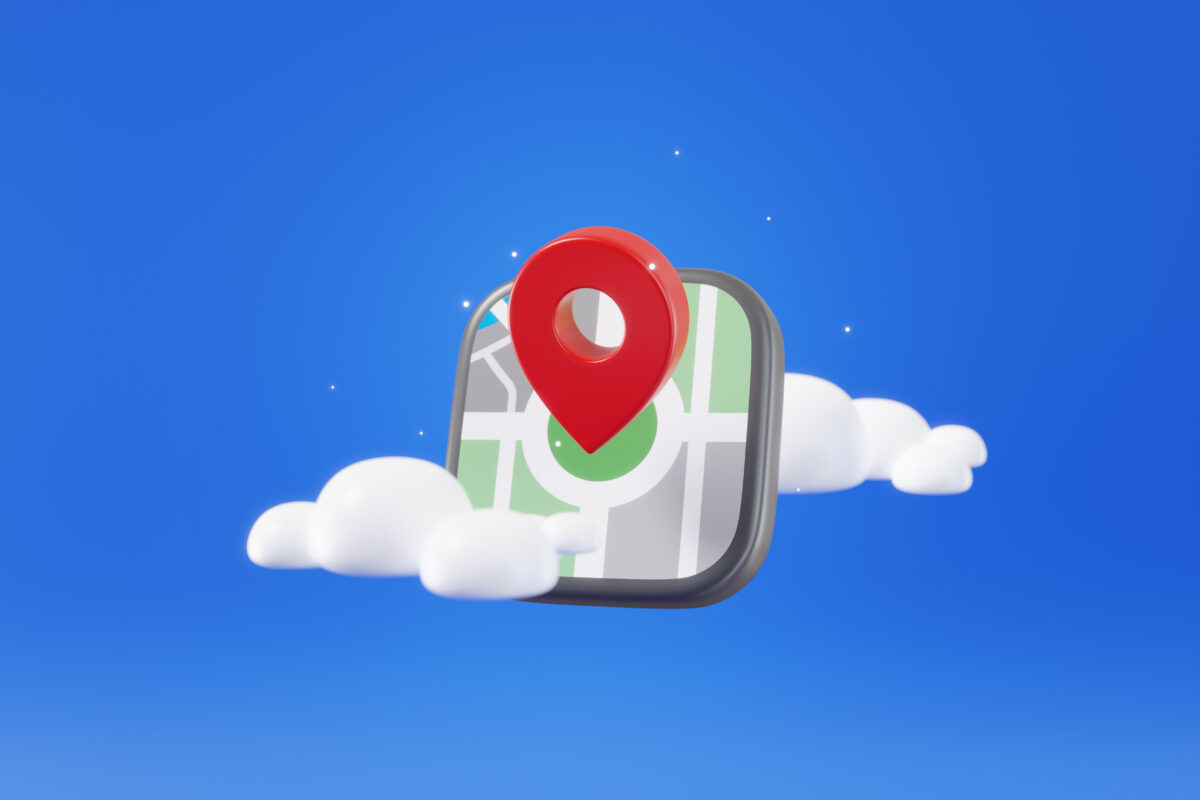
Full Keyword Research Strategy for ASO
So, you want to create a new mobile application, but you want to make sure that you’re taking all the steps to grow your app’s popularity organically. Have you ever wondered what the best way is to get a brand new app noticed? Or maybe you’ve heard that keywords are what people use to find your app?
The best strategy for ASO is to try to match keywords to the keywords that the app’s users will be looking for to help the search engine know to present the app as an option for their search. The keywords should be tried, tested, and adjusted to match the words users will put in the search engine.
Keyword optimization is key to helping users find your app. You have to give the app store words that users will use frequently, which will call your app up when people search for those words. The trick is to match those words up in such a way that users will find your application, while not being so generic that all of the apps which were created before yours show up alongside your app, which could crowd it out before it’s had the chance to get noticed.

What is ASO?
ASO stands for App Store Optimization. It’s what two of the main mobile app providers—the Google Play Store and the Apple App Store—use to help pair searches with keywords to a list of app results based on what they typed in.
You may have heard of SEO (Search Engine Optimization), which is what search engines like Bing, Brave, Yahoo, and Google use to display the best search results based on the user’s search input. Search engines like Google have gotten a lot smarter in the way that they pair up searches and results, often using machine learning and artificial intelligence to better understand and display patterns and results.
Users are happier to get the results that they want and businesses are happy because they can get kickback revenue from ads that they sponsor that appear alongside search results. There are a few differences between ASO and SEO. App Store Optimization has readily available ratings and reviews at the end of a search. Keyword density, title tags, and page speed aren’t necessarily part of the metrics, but download statistics, backlinks, the app’s description, quality, and usage metrics are.

How Many Apps Are in App Stores?
Apple App Store
The App Store has almost two million apps to choose from for your various Apple Devices. Today there are apps for iPads, Apple Watches, Apple TVs, computers, and smartphones. Apple started capitalizing on supporting iOS apps in 2008, and since then, applications for mobile devices have taken off. After adding support for iOS, almost 150,000 new apps were added to the App Store in less than two years.
With so many options to choose from, a new app can often be lost in the search. Someone searching for an app may simply stop scrolling and choose one that is closer to the top of the search results than other similar apps. Another thing to know that is bad news for app developers is that the App Store selection is shrinking so that Apple can better control the quality of its applications.
They’ve been working on shrinking the selection down to improve quality since 2017, and Apple hasn’t been as public with exactly how many apps are offered since 2020, so it’s hard to tell exactly what the competition looks like. However, Apple did report that they had 1,800,000 apps that work for iPhone, iPad, and iPods in 2020.

Google Play Store
The Google Play Store is less restrictive than Apple when it comes to new apps. They had almost 3 million apps in 2020, but that means that you’ll be up against even more competition with the Google Play Store’s other apps than you would be with the App Store. Google has a nice keyword planner that helps vendors better understand ASO and how they can take advantage of it. This keyword planner allows you to research keywords, offers suggestions for keywords, offers advertising estimates on keywords, and can help you create an advertising plan. The keyword planner works on any of their services for a small fee.
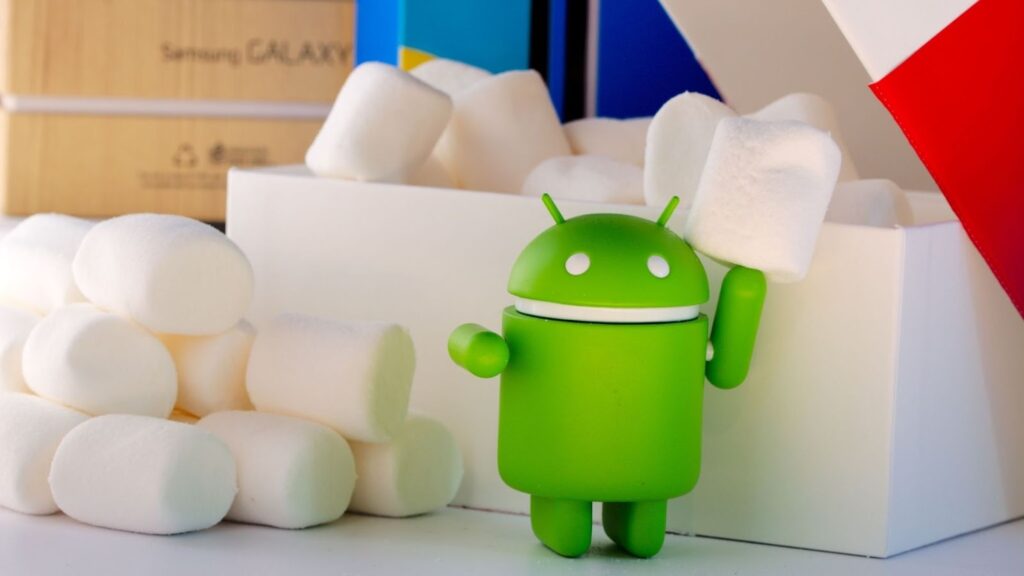
How To Stand Out
Creating a successful app can make you millions of dollars if it’s unique and superb, or if a larger company comes along and buys your app from you. Apps can be very lucrative. Since they don’t have many fixed costs, they can function as a sort of passive income.
You may have to pay a fee once every year but will continue to reap the rewards from app purchases or ads throughout the year. That being said, it’s important to stand out from the crowd of other apps. There are strategies to making your app appear when searched and making it more visible when consumers are looking at search results.
Searching for an app is not the same thing as shopping for something online, where you may have multiple tabs open, and potential customers might stick something in their cart and come back to it another day. Around 65% of all app downloads happen after a direct search. That’s over half of your downloads coming from a keyword search. Your app’s keywords have to be accurate; they should lead buyers to your app specifically, and not to other similar, competing apps.

Keyword Optimization
Since you aren’t talking to the people who are looking for your app, you have to use the keywords that people use when they search for your application. Searching and using the best keywords is how you get people to your site. Knowing which keywords to use is the crucial aspect of this, and it’s why so much research and development is done for keyword optimization.
Improve Your Appeal
It can be a lot of guesswork to try to figure out what works best and what’s most appealing to your audience. You may think that something looks good and enticing, but will your audience? They are the ones that you have to appeal to. You will want to try different techniques so that you can find the best tactics to use for your app and its description.
Along these lines, it’s important to do research and field testing, and not simply develop the app, keywords, and design all in-house. Using beta-testing, qualitative and quantitative research, and receiving feedback from people outside of your company is crucial for developing a good description and utilizing ASO.

Quantify and Qualify Your Results
Once you’ve tried out a few different tactics, it’s important to measure, write out, and analyze your results. What words were working? Which designs did people look at longer and download? Was everyone indifferent about a certain design? Being able to quantify and qualify data in this way allows you to develop better ASO and back it up with tangible results.

Keyword Optimization
When someone is searching for an app that has logical puzzles, they might type in just that, or they might type in, “mind game”, “brain quiz”, “puzzle building”, “brain builder” or something of that nature. There will be many options for a game like this, so it’s important to hone in on the specific keywords that match your game. You can also try to think of keywords commonly used when searching for your app that people were typing in, but that weren’t retrieving the results they wanted. Constant adjustments need to be made between vendors and customers to try to find and meet the needs of their niche.
The 3 main concepts that App Store Optimization uses to achieve the best keywords in a search are relevance/voice, competition/ranking, and search volume/popularity.
Relevance/Voice: Relevance is extremely necessary to drive the right kinds of customers to your app.
Competition/Ranking: Competition will tell you where your app’s searches appear in relation to other applications.
Search Volume/Popularity: The popularity of a word—how often it shows up in the data.
The strategy that you develop should be based on these three main ideas with search volume being at the top of your priorities.
Apps that are ranked higher than others will appear closer to the top of the search results than the others that have been highly ranked. The greater number of downloads an app has, the higher it ranks in comparison to other apps. You’ve usually got 3 scrolls before the user gets bored and doesn’t scroll any further. If you want app downloads, your app needs to be in the first 5 apps on the list.
If your app isn’t frequently updated and crashes often, it will be ranked poorly because it will be considered a low-quality app. Some of these apps can be removed by the app store because they are considered to be buggy or a scam, so make sure your app doesn’t come off that way. Both Apple and Google are trying to cut down on the number of apps they have by removing the bad ones.
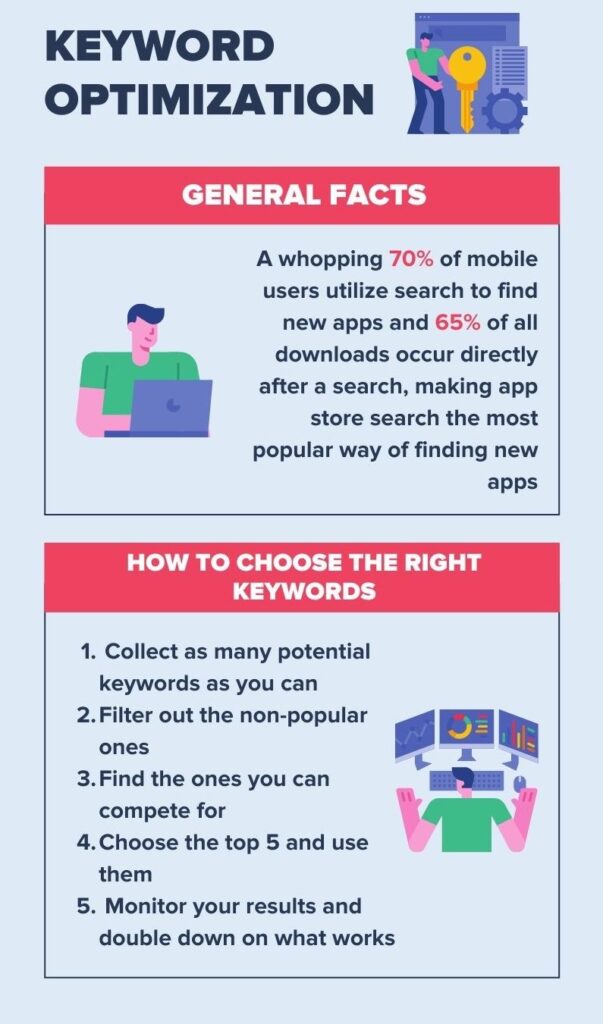
Improve Your Appeal
Organic growth comes from constant innovation. You should make your app as presentable as it can be. You’ll notice that the highly successful apps are clear in what their purpose is and to who they’re advertising to. They have sufficient photos and videos to help you understand what the app is before you download it. Their images are clear and engaging to look at.
I spoke to an owner of several online businesses who told me that you don’t really know what your customers will want until you post it. Something that may not seem like a very desirable product to you might be hugely popular with your audience. The same goes for driving traffic to your app.
Change your description, phrasing, icons, and photo order. You can also redo your videos periodically to maximize your appeal. It may be tempting to simply set everything up and leave it, but you want to constantly be improving. You can even look at your competitors to get an idea of what they’re doing and how they’re improving their image.
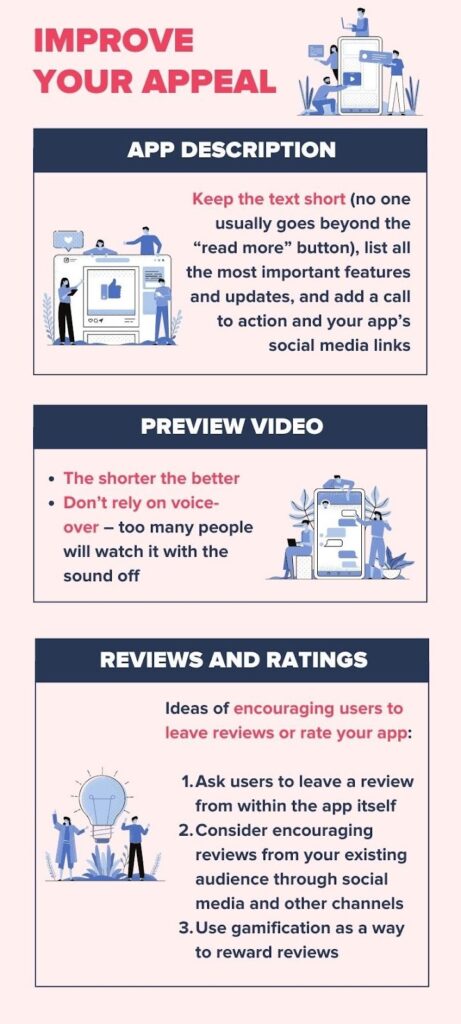
Quantify Your Results
It doesn’t do much for you to change and update your app’s presentation if you’re not looking at your results. Is there steady growth, and was there any change in your numbers after you tweaked something minor? You want to pay attention to that and be sure that you’re not missing anything in the data. Once you have the data, you can come up with theories on those changes and know how better to proceed with your process in the future. It’s a bit like a wash, rinse, and repeat process as you try to perfect your approach to ASO.
Everyone has to type in something to get search results and your job as the app provider is to tag your app with the appropriate keywords to help link users’ searches to your application. Then, you can analyze those results and see which changes worked well, and which ones didn’t work as well.

Pay For Results
After all is said and done, you can and maybe should pay to get your app out there. You can even pay for an in-depth analysis on your ASO and an analysis of your competition. When your app is starting out, it’s a good idea to pay to have your app show up as an ad especially if your app is not the first of its kind or competing only with a handful of other relevant results. You’ll want to pay for sponsorship to get the ball rolling.

Get Monetized
When your app is finally ready to put in the app store, and you’ve done all of your ASO so that you know that keywords will be optimal for app searches, you’re ready to monetize your app.
There are three ways you can monetize an app:
1) You can make the app a pay-to-download. This means that every time somebody wants to download the app, they have to pay for it before they can use it.
2) You can make the app part of a subscription service. Subscription services are often free to download but don’t provide any functionality unless the user subscribes and pays a recurring fee.
3) You can make the app an ad-revenue generator. If you’re willing to show ads, you can charge people for placing ads inside of your game. The key with this one is the number of viewers/regular users that will see the ads.
There are advantages and disadvantages to each of these, so do your research before you decide. Keep in mind who your audience will be for the app, and how that may influence what they’re willing to do.
